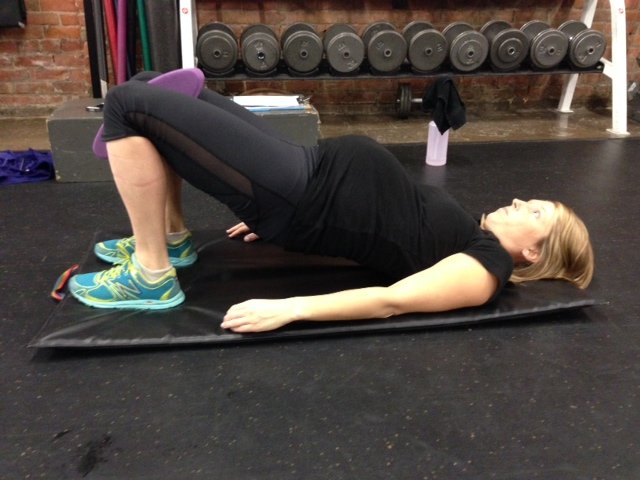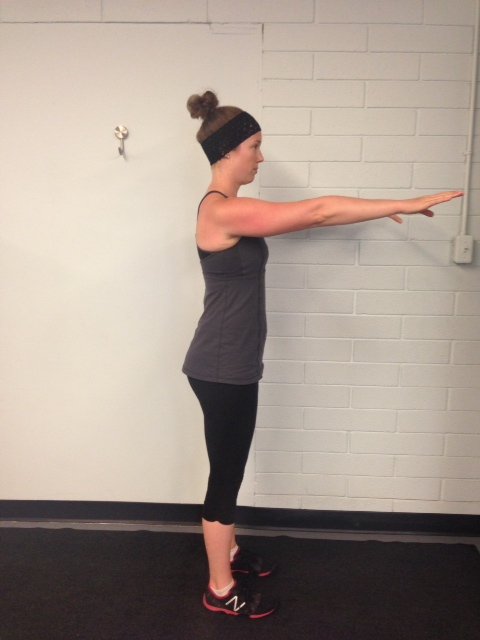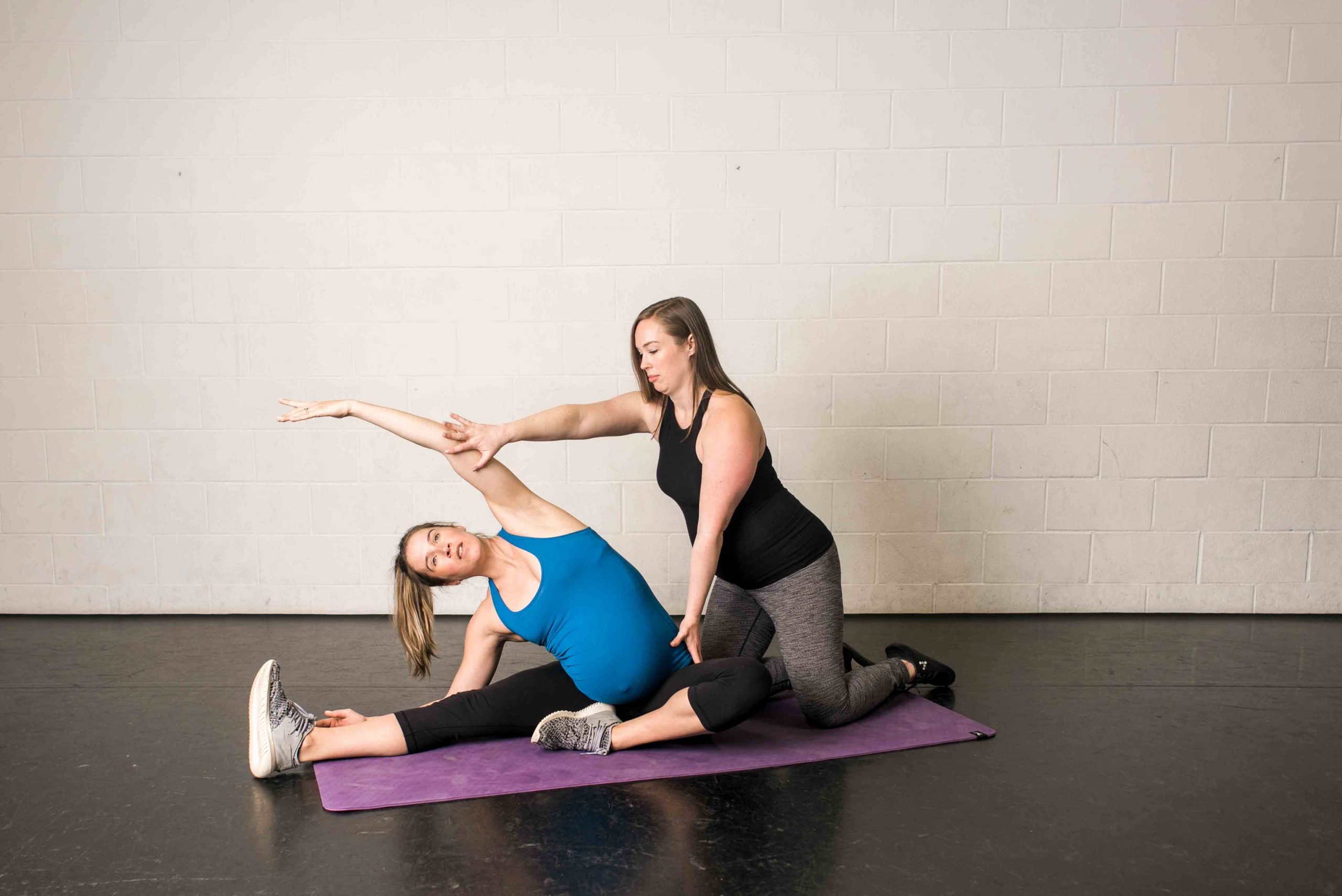Just over four years ago, I defended my Masters degree at the University of British Columbia, where I was studying in Vancouver.
The research I was discussing was on the considerations we, as coaches and trainers, should be taking when designing exercise programs for women in pregnancy.
I talked about the cardiovascular, musculoskeletal, hormonal, and psychological aspects of pregnancy and how ALL these things determine how we train a prenatal client. Because, really, it’s all the things.
During the presentation, I talked a lot about the changes to the core and prevention of issues to the core in pregnancy and postpartum.
After the presentation, one of my committee members suggested that I not become too concerned with the function of transverse abdominis (TA) in pregnancy, diastasis, and core training.
Um. WHAT?
I was confused. Irritated, even, that he made that comment.
Now, of course I knew that TA wasn’t the whole story when it came to core training and even pregnancy core function. But, it was an important part of the story, wasn’t it? Teach a client to engage their abdominals correctly and you have a strong core, right?
Yaaaa. Not-so-right.
Thankfully, that man’s comment spurred me to learn so much about the core, diastasis recti, and the pelvic floor.
Here’s 5 Thing That We (Think We) Know Now:
- TA is an important muscle…kind of like every other muscle in the body.
- Teaching someone to use their core correctly may help their core become ‘more stable’, but this doesn’t mean activating their TA will magically cure the core, or end lower back pain, for example.
- There are a lot of other things we need to consider: alignment, breath, the pelvic floor, and those pesky other abdominal muscles we have 😉
- Strength training is core training. I repeat, strength training is core training.
- We need to retrain the SYSTEM in which we use the core in pregnancy and postpartum (the timing and coordination of it).
(*BONUS: Core training in pregnancy and postpartum is not just about the pelvic floor and kegels either…but it’s not just about squats either, in my opinion)
How Do We Train The Core In Pregnancy and Postpartum?
We need to build a solid foundation when training the core in pregnancy and postpartum. By that I mean, get the body working as a unit, with all the parts working to help each other.
I like to think of core training in pregnancy and postpartum as a “Ready, Set, Go” approach. Here’s what I mean:
• READY: Get the body aligned
This is a whole body approach to core training, not just the abs. Questions I ask myself when training a client:
– What is going on at the pelvis? What is going on at the feet? What is happening with the upper body? Is the bum behind the ribcage? Is the ribcage over the pelvis?
(My bum is behind me and my ribcage is over top of my pelvis, getting my diaphragm over top of my pelvic floor muscles)
We start here and encourage good alignment it in every day life and in exercise. This DOES NOT mean the pelvis should never be anteriorly or posteriorly tilted. That’s crazy talk. It’s absolutely necessary and wonderful to move the body through those ranges of motion, in my opinion.
It does mean that while you’re growing babies or caring for babies it could be most effective to keep the body in neutral alignment as much as possible, especially when lifting heavy toddlers and carrying awkward car seats.
• Set: Pay attention to breathing patterns
Put one hand on the belly and one hand on the side of the ribcage. Breathe into your hands, and try to feel your ribcage, belly, and pelvic floor inflate with air. On your exhale breath, feel those areas deflate.
We first want to train the body to know what it feels like to release tension in the abdominals and the pelvic floor as we can get really good at holding those areas too tight.
When those muscles are “on” all the time, we can’t really get them working better. Muscles are strongest when they can go through a nice long range of motion to generate tension.
In the case of a hypertonic (too much tone/work happening) pelvic floor, the range of motion is shortened and those muscles have little room to work. A tight muscle might be a good short term solution but not a useful long term one. Lengthen to generate tension.
We don’t move on until the GO until we are set feeling the release.
• Go: We get the Core + Floor Connection happening and add it to exercise
Take one step back and review that you’re set with your breathing. You can feel the inflation of the trunk, and releasing of tension in the abdominals and the pelvic floor.
On your next exhale breath, you want to sense two actions:
1). Try to lift the vagina and the anus up into the body juuuuust gently. 30% of your max effort. If you think about that tight squeezing you would do to stop the flow of urine if you’re going to the bathroom, do about 1/3 of that effort.
2). Try to imagine a wire connecting the front of your hip bones. Use your abdominal muscles to cinch that wire, to draw your hip bones closer together. You’ll feel deep tension in your lower abdominals.
*DISCLAIMER: Don’t do the Core + Floor Connection if you’re having pelvic pain, noticeable tension in the pelvic floor, urinary urgency, OR if can’t sense any relaxation in the belly, pelvic floor, or expansion through the ribcage on your inhale breath. Read this article, first.
K.I.S.S Principle
ALL of this can sound a bit overwhelming and confusing while you’re just going through and learning it. This is why we start learning this stuff in gentle, small range of motion type exercises to make this system automatic for the body.
We do it over, and over, and over again until it’s ‘just what your body does’. This is retraining the brain and body to do things differently and that can be uncomfortable and all kinds of awkward.
If it all feels like too much to think about, just exhale on exertion.
(*Coaches: refer, refer, refer to pelvic floor/women’s health physio to ensure that you’re doing appropriate pelvic floor work with your clients)
This is the process my Core + Floor Restore program takes, It’s an 8-week program for prenatal and postnatal women to rehab the abs, heal the pelvic floor, and gain strength.
JMG





![[Empowering Clients + Elevating Your Career]
PFSA Pre & Postnatal Coaching Certification is designed to ensure YOUR and your clients’ success!
Registration is open now – you'll save $500 and get access to a live BONUS COACHING WEEK when you enroll by Thursday, April 25th!
🔥 Comment “PFSA” and I’ll send you the discounted link to learn more & upgrade your skills.
Transform your career and become a certified PFSA professional. Let’s gooooo!
#CesareanRecovery #PrenatalExercise #PregnancyTips #PrenatalExercises #PrenatalFitnessTrainer #ActivePregnancy #PostpartumPilates #PostnatalWorkout #PostnatalExercise #PostpartumTraining #PostnatalCheck #PostpartumExercise #SafeExercisePostpartum #FullBodyWorkout #ParentWorkout #WorkoutsForParents](https://jessiemundell.com/wp-content/plugins/instagram-feed/img/placeholder.png)
